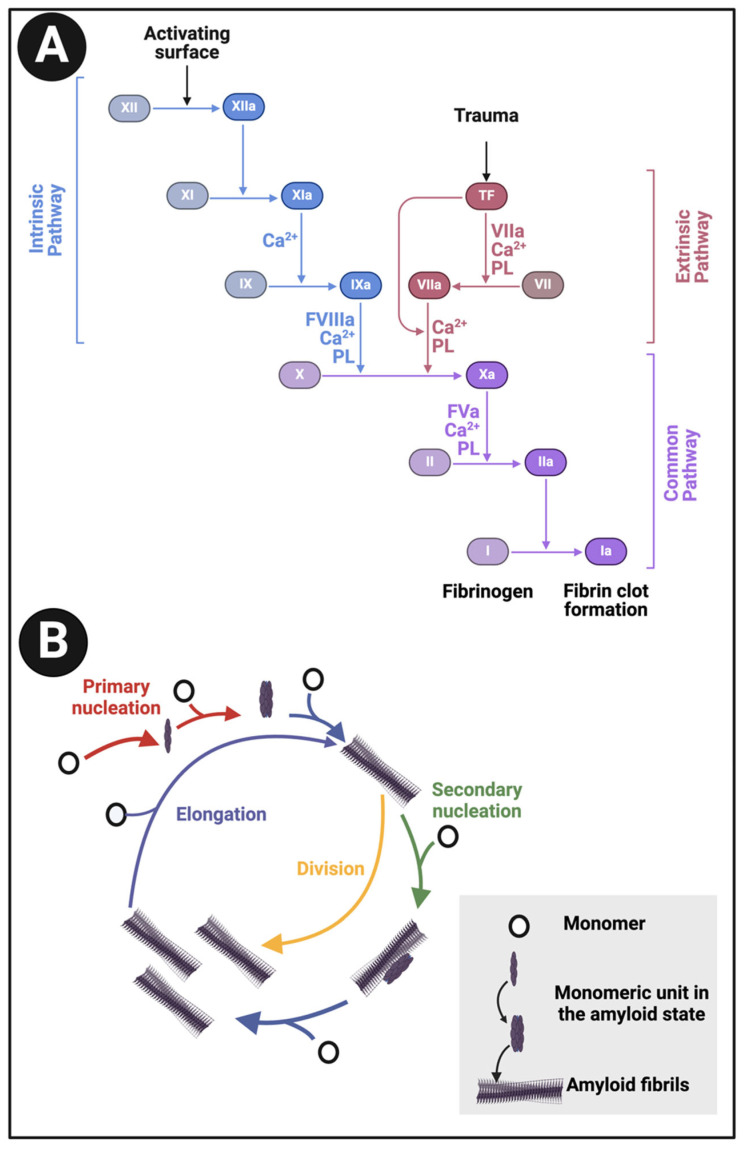Figure 1.
(A): The clotting cascade and (B) fibrinogen conversion to fibrin. The clotting cascade involves the intrinsic, extrinsic, and common pathways, each comprising various clotting factors. The intrinsic pathway includes factors I (fibrinogen), II (prothrombin), IX (Christmas factor), X (Stuart-Prower factor), XI (plasma thromboplastin), and XII (Hageman factor). The extrinsic pathway consists of factors I, II, VII (stable factor), and X. The common pathway involves factors I, II, V, VIII, and X. These factors circulate in the bloodstream as zymogens and are activated into serine proteases, which catalyse the cleavage of subsequent zymogens into more serine proteases, ultimately activating fibrinogen. The serine proteases include factors II, VII, IX, X, XI, and XII, while factors V, VIII, and XIII are not serine proteases. The intrinsic pathway is activated by exposed endothelial collagen, whereas the extrinsic pathway is triggered by tissue factor released by endothelial cells after external damage. Drawn using Biorender.com.

